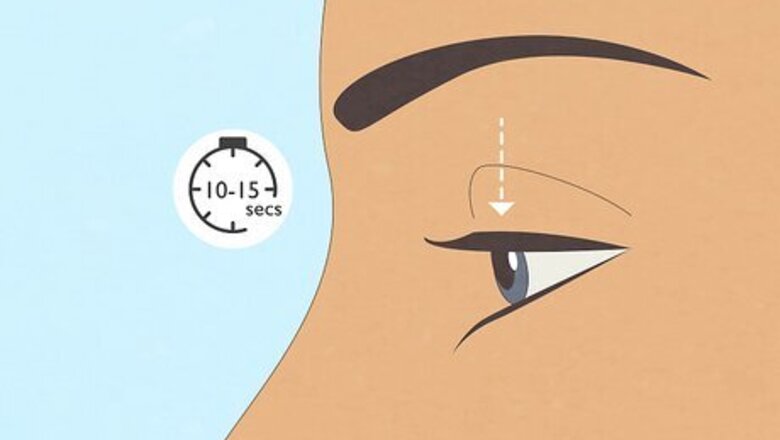
views
X
Trustworthy Source
Harvard Medical School
Harvard Medical School's Educational Site for the Public
Go to source
Working Out the Eyes
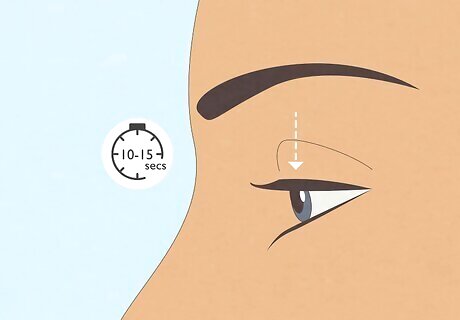
Strengthen your eye lids. The muscles that surround your eyes can be strengthened just like the other muscles of the body. Begin by partially closing your eyes; the lids should only be halfway shut. You'll notice that your upper eyelids will tremble with the effort. Focus your efforts on stopping this trembling. Hint: Stopping the trembling of your eye lids will be easier if you focus your gaze on objects further away. After holding for 10 to 15 seconds, close your eyes very slowly. Take a few deep breaths to increase oxygen in the blood. As you inhale through your nose, imagine the fresh, oxygen-rich air coming through your nose and into the eyes. Then, exhale out through your mouth. Continue this breathing exercise for one to minutes.
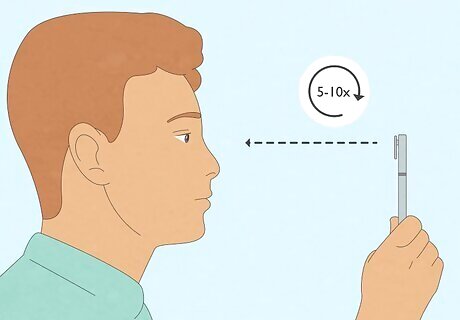
Perform focusing exercises. By focusing on objects at different distances, you exercise your eyes in focusing at distances both far away and near as well as provide relief from eyestrain. There are two types of focusing exercises you can try: Hold a pen at arm's length. Focus your gaze on the tip of the pen. Bring the pen closer to your nose at a slow and steady pace. Repeat this exercise 5-10 times. Concentrate your vision on the tip of your nose. Then shift your gaze to an object further away, either at arm's length or 20 feet away. Then shift your eyes back to the tip of your nose. Repeat this exercise 10 times. Be inventive and challenge yourself. Choose objects at several different distances to focus your eyes on.
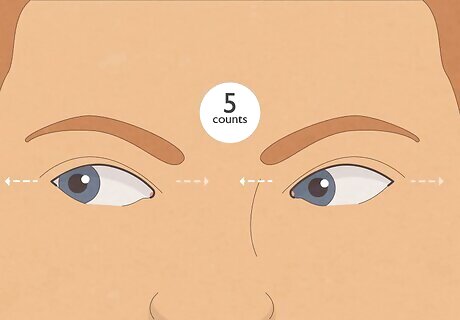
Do lateral and medial eye stretches. These exercises stretch and strengthen specific eye muscles, those that move the eye from side to side. For instance, when looking to your right, you are using the lateral rectus of your right eye as well as the medial rectus of your left eye. When you look to your left, you use the lateral rectus of your left eye and medial rectus of your right eye. Sit in a relaxed but upright position. Begin by look to the left-most position (without moving your head) and hold to stretch your eye muscles. Hold for 5 counts. Blink and return your gaze back to look straight in front of you. Then look to the right-most position with your gaze and hold for 5 counts. Repeat 3 times, blinking between each hold. Make sure to move your eyes either during inhalation or exhalation; try not to hold your breath. Then, repeat this exercise looking up and then down. Do not forget about blinking.
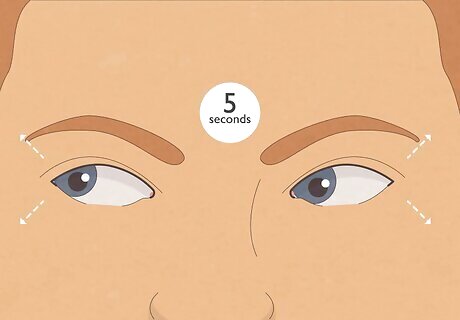
Do diagonal stretches. As in the previous exercise, diagonal stretches require looking in a fixed position for a few seconds. There are additional muscles worked here, however. For instance, when looking up towards your left, you are using the superior oblique of your left eye and the inferior oblique of the right eye. Sit in a relaxed but upright position. Look up and to your right for 5 seconds. Return your gaze to center. Look up to and to your left for 5 seconds. Return your gaze to center. Look down and to your right for 5 seconds. Return your gaze to center. Look down and to your left for 5 seconds. Repeat 3 times.
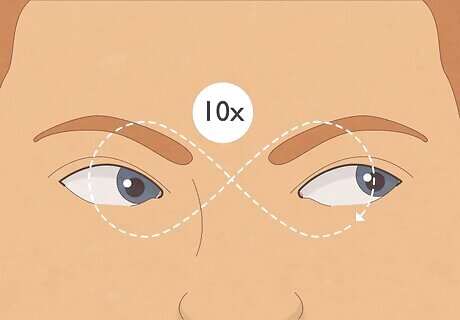
Draw an infinity sign with your eyes. Imagine an infinity sign or horizontal figure eight in front of you. Trace the eight with only your eyes slowly, and about ten times, without moving your head. Blink between repetitions.
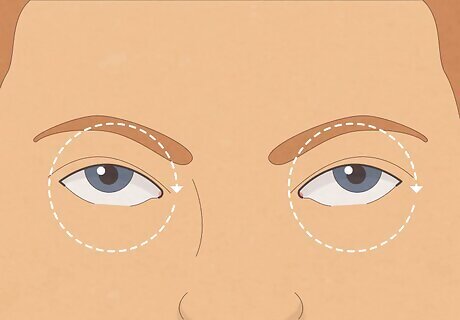
Draw circles with your eyes. One helpful way to do this is to imagine that you are looking at the number 12 on a clock. Then, follow the numbers around the clock with your eyes. Repeat going the other way around the clock.
Relaxing the Eyes
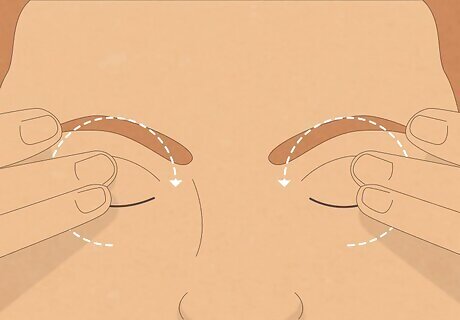
Massage your eyes. Massage is a common treatment to relieve tension or stress because it helps stimulate increased blood flow to targeted areas. Begin by gently massaging your upper eyelids for 10 seconds. Then, gently massage your lower eyelids. If you wear contact lenses, take them out before doing this exercise. Apply light pressure when massaging and use the first three fingers of your hand. Make gentle, circular movements. The soft pressure on the lacrimal glands, which produce most of your tears, helps to stimulate tear production and wetness in the eyes. This, in turn, provides soothing and much-needed hydration to tired eyes. When massaging the lower lids, make sure to massage across the lacrimal bone, which is located near the inner eye.
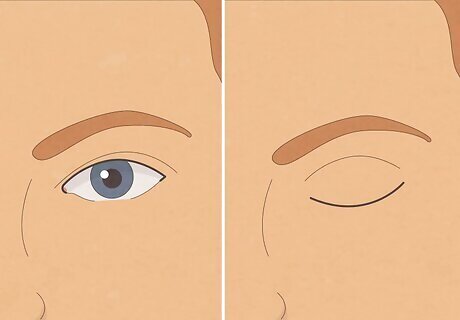
Blink more. Blinking offers much-needed breaks and moments of relaxation for our eyes. However, it is often something most people disregard since it is such a natural activity that generally requires little thought. However, making an effort to blink more frequently can help ameliorate eye strain. Blinking helps lubricate and hydrate your eyes. Not only does blinking push out toxins with tears, it also works to spread tear film evenly over your eyes. Blinking can thus help ameliorate eye dryness. Try to blink once every four seconds to keep your eyes from drying out.
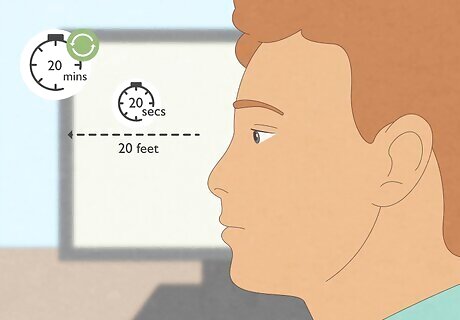
Take breaks. Giving your eyes more breaks during periods of intense focus or concentration, particularly at a computer screen, will help alleviate eye strain. Try the 20-20-20 method: Every 20 minutes, look away from your screen at any object 20 feet away for 20 seconds. If you have a hard time remembering to take breaks, set an alarm as a reminder to rest and reset your eyes. You can also try fully opening and closing your eyes every once in a while. Research suggests that this action can reduce the symptoms of eye strain, eye fatigue, and dry eyes.
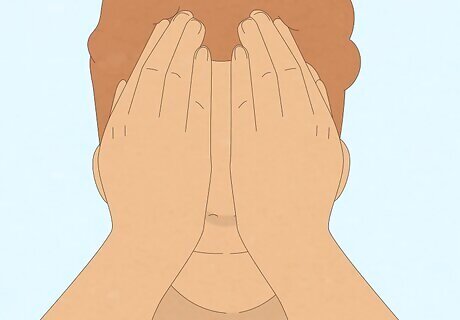
Perform palming to relax your eyes. Palming can be done very simply. Take your palms and cover your eyes for a few minutes. Sit comfortably in a chair with a straight back. Place your elbows on a table, on top of a pillow or blanket for added comfort. Rub your palms together beforehand to produce some heat before you begin palming - this heightens the relaxation component of this technique. Cup each hand and close your eyes. Place each cupped hand over each eye. Breathe normally and rest in this position for 5-10 minutes. You may want to set an alarm to keep the time. If after your alarm goes off you feel refreshed, then this the right amount of time you should spend palming. If you don't feel refreshed, add an extra five minutes and observe any changes afterwards.




















Comments
0 comment